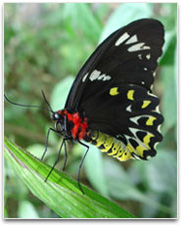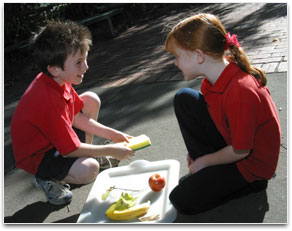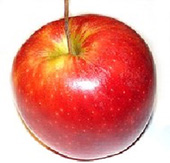how do living things get what they need to survive
This focus idea is explored through:
- Contrasting student and scientific views
- Critical teaching ideas
- Teaching activities
Contrasting educatee and scientific views
Educatee everyday experiences
 For immature students things are 'living' if they movement or grow; for example, the dominicus, wind, clouds and lightning are considered living considering they change and move. Others call back plants and certain animals are non-living. An everyday instance is that students think diverse lifecycle stages of a butterfly are not alive (the eggs and immobile pupae), whereas a caterpillar and butterfly tin move and are therefore considered to be alive.
For immature students things are 'living' if they movement or grow; for example, the dominicus, wind, clouds and lightning are considered living considering they change and move. Others call back plants and certain animals are non-living. An everyday instance is that students think diverse lifecycle stages of a butterfly are not alive (the eggs and immobile pupae), whereas a caterpillar and butterfly tin move and are therefore considered to be alive.
There are some difficulties due to the way words such as 'living', 'plants' and 'animals' are used in everyday voice communication. Students sympathise 'living' in relation to where and how people 'live', for instance ' living in my house', 'a dog lives in a kennel'. The students focus on the activeness that takes place inside a location. Students frequently do not recognise that trees, vegetables and grass are plants because 1 everyday use of the word 'plant,' refers to small, decorative plants in gardens and nurseries.
Well-nigh students list only vertebrates , specially mammals as animals. Primary students use criteria such as number of legs, body covering and habitat to determine 'animal'. Some children think animals live only on land.
It is common for 5-vii year former students to accept no conception of humans as animals. Often students use 'animals' equally a term to distinguish between people and animals. This agreement may be further reinforced past common language utilise, for example signs that read 'no animals on pike' and statements like 'time to feed the animals' when referring to family pets.
Every bit students gain knowledge of biological groups such as reptiles, insects and various types of worms, they lose the inclusive 'animal' concept. Young students aged 5-vi yrs are more than likely to think of spiders and worms equally animals (a biologist's view) than are students aged nine-x.
Research: Bong (1981) (1993), Bell & Barker (1982), Mintzes, Trowbridge, Arnaudin & Wandersee (1991), Fleer & Hardy (1996), Leach, Driver, Scott & Wood-Robinson (1995), Carey (1985), Stepans (1985), Kerr, Beggs & White potato (2006), Osborne & Freyburg (1985), Irish potato (1987)
Scientific view
Living things may exist distinguished from not-living things in their ability to carry on life processes such as movement, respiration, growth, responsiveness to environmental stimuli and reproduction. This view of living may be appropriate at this age merely has some limitations and can lead to the alternative conceptions to a higher place. For example movement in plants is not apparent to students and consequently they may non consider plants living.
Decisions about whether things are alive or non-living remain problematic as not all life processes end at the aforementioned fourth dimension. For example, human being fingernails and hair keep to grow for weeks after death.
Critical teaching ideas
- Virtually living things demand food, h2o, calorie-free, temperatures within certain limits, and air.
- Living things have a variety of characteristics that are displayed to different degrees: they respire, movement, reply to stimuli, reproduce and grow, and are dependent on their environment.
Research: Skamp (2004)
![]() Explore the relationships betwixt ideas nearly living things in the Concept Development Maps – (Prison cell Functions, Variation in Inherited Characteristics, Deoxyribonucleic acid and Inherited Characteristics, Flow of Energy in Ecosystems, Flow of Affair in Ecosystems, Natural Selection)
Explore the relationships betwixt ideas nearly living things in the Concept Development Maps – (Prison cell Functions, Variation in Inherited Characteristics, Deoxyribonucleic acid and Inherited Characteristics, Flow of Energy in Ecosystems, Flow of Affair in Ecosystems, Natural Selection)
To build upwards a concept of living things focus on the similarities shared with unlike living things. For example, compare 'a gum tree and a yabby' rather than always referring to the differences which tin be hands identified. Concentrating on differences lone does not encourage students to make connections across ideas or groups, such every bit seeing that 'constitute' is a major category of nomenclature not just a label for a type of 'plant' in a nursery. In that location is a demand to maintain a focus on the big ideas (such equally groups of classification) and let students to make connections betwixt private examples and the big ideas.
Research: Skamp (2004)
It is non unproblematic for teachers to determine how to disprove the idea that fire is 'alive'. Children tend to think fires are living because they consume wood, move, require air, reproduce (sparks cause other fires) and give off waste (such every bit fume). This is a complex idea and is better dealt with at higher levels where concepts can exist unpacked in more sophisticated ways. Hence information technology is not necessary to try to change these conceptions at this stage, but to recognise that students may hold and maintain this view at some stage as learners.
Inquiry: Kyle, Desmond, Family & Shymansky (1989) , Skamp (2004)
Instruction activities
Collect evidence and data for analysis and open up discussion via shared experiences
 Students collect objects from the schoolyard on a scavenger hunt and classify them into groups of their choosing. Students volition articulate their classification organization. Teachers can and then utilize this discussion to open upwards issues such, 'Is it alive?', 'Was it e'er alive?' Such a discussion can elicit student ideas and highlight the difficulties associated with determining if objects are living. Farther discussion ideas could include a leafage that has just been picked, a fresh apple etc. Students could take digital photos and create a montage.
Students collect objects from the schoolyard on a scavenger hunt and classify them into groups of their choosing. Students volition articulate their classification organization. Teachers can and then utilize this discussion to open upwards issues such, 'Is it alive?', 'Was it e'er alive?' Such a discussion can elicit student ideas and highlight the difficulties associated with determining if objects are living. Farther discussion ideas could include a leafage that has just been picked, a fresh apple etc. Students could take digital photos and create a montage.
 Of the 19 experts who responded to students' letters on the question of 'Is a picked love apple alive?', 17 took the view that the picked tomato was not alive. A practiced case could be argued that the freshly picked love apple is alive considering it is able to maintain its biological integrity for a considerable period of time later picking; i.east. it could modify colour from green to reddish if placed in the lord's day (as a growing tomato plant would exercise) and both would eventually show signs of water loss and disuse (at unlike rates). This provides good content for an interpretive discussion requiring students to employ reasoning to justify their arguments because the answer is not clear cut; different opinions are probable and the discussion will open upwardly a range of questions and relevant issues.
Of the 19 experts who responded to students' letters on the question of 'Is a picked love apple alive?', 17 took the view that the picked tomato was not alive. A practiced case could be argued that the freshly picked love apple is alive considering it is able to maintain its biological integrity for a considerable period of time later picking; i.east. it could modify colour from green to reddish if placed in the lord's day (as a growing tomato plant would exercise) and both would eventually show signs of water loss and disuse (at unlike rates). This provides good content for an interpretive discussion requiring students to employ reasoning to justify their arguments because the answer is not clear cut; different opinions are probable and the discussion will open upwardly a range of questions and relevant issues.
Research: Skamp (2004)
Challenge some existing ideas
Other questions to explore could be whether a reckoner which is turned on is live; whether a hibernating bear is alive; and whether a deciduous tree in winter is alive. Consider listing key questions that arise in relation to this issue or review these ideas over time with students.
Enquiry : Skamp (2004)
Source: https://www.education.vic.gov.au/school/teachers/teachingresources/discipline/science/continuum/Pages/livingthings.aspx
Posting Komentar untuk "how do living things get what they need to survive"